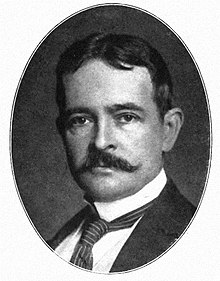Robert Abbe
| Robert Abbe | |
|---|---|

Circa 1899
|
|
| Born | April 13, 1851 New York City |
| Died | March 7, 1928 (Age 76) |
| Residence | United States |
| Citizenship | United States |
| Fields | Medicine |
| Institutions |
New York Hospital St. Luke's Hospital |
| Alma mater |
College of the City of New York Columbia University |
| Known for | Radiation oncology |
| Influences | Marie Curie |
Robert Abbe (April 13, 1851 – March 7, 1928) was an American surgeon and pioneer radiologist in New York City. He was born in New York City and educated at the College of the City of New York (S.B., 1871) and Columbia University (M.D., 1874).
Abbe was most known as a plastic surgeon, and between 1877 and 1884 he served as a surgeon and professor of surgery at the New York Hospital, St. Luke's Hospital, and the New York Babies Hospital. During this time, he would spend summers travelling, and he amassed a large collection of Native American artifacts and archeological materials.
He is credited with the lip switch flap, which now bares his name. An Italian surgeon named Sabattini described the flap 60 years earlier. Although Sabattini published his technique, it was printed in a book with a limited circulation.
He died of anemia, possibly due to his work handling radium.
Abbe was a renowned surgeon and medical pioneer. He was an attending surgeon at St. Luke's Hospital in New York, where the plastic surgical laboratory is named for him. He was a lecturer and fellow of the College of Physicians of Philadelphia and Vice President of the Academy of Medicine.
He befriended the Curies, and in particular Marie Curie. He collected many photographs of her, documented the production of radium, and explored, with her, the medical uses of radiation and x-rays. In 1904, he introduced the practice of using radiation to treat cancer and founded the science of radiation oncology. In 1927, he founded the Abbe Museum of Native American artifacts.
...
Wikipedia
